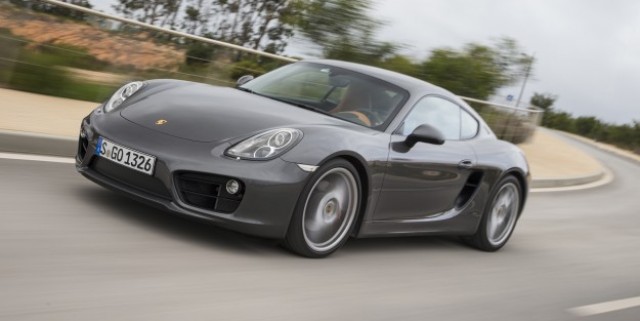
A second-generation Porsche Cayman means it’s time to revisit an intriguing question: how much is an iconic sports car badge worth?
At $115,500, the entry-level Porsche Cayman is half the price of the cheapest 911 ($229,400).
Buyers, of course, will typically be split into two camps: those who want a 911 –the bigger and faster sports car (with the bonus of kiddie seats) – and those who are after a more realistically attainable Porsche coupe.
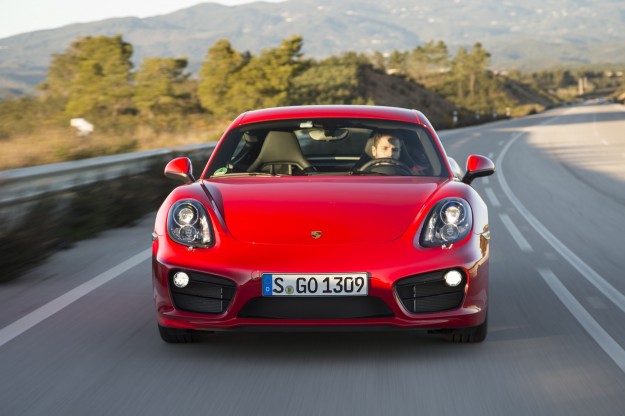
CarAdvice has been invited to Faro in southern Portugal to test the new Porsche Cayman ahead of its local release in April.
The old model was one of the great driver’s cars, and combined with our experience last year of the Cayman’s convertible twin, the Boxster, with which it shares many commonalities, expectations are elevated.
Step into the new Porsche Cayman and you’re greeted with the perfect driving position that is the epitome of the car’s stand-out ergonomics – low set, keeping the driver’s eyes level with the prominent front guards, without compromising all-round vision.
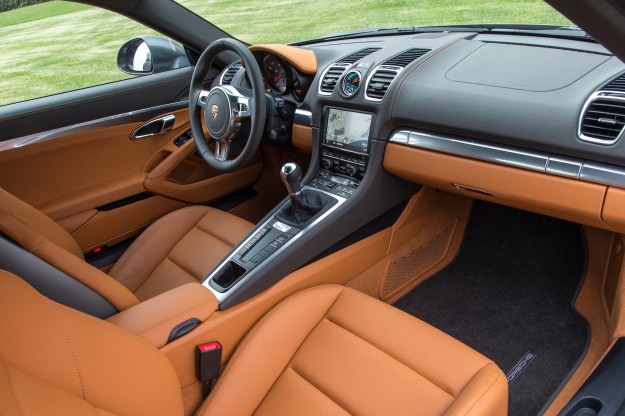
Notably different, though, is the newly enriched interior that sees the Cayman as the last of the Porsche line-up to adopt the rising-bridge console design and perceived lift in materials quality.
Practicality is always a relative term when it comes to sports cars, but the Cayman offers some useful solutions, not least its front and rear luggage compartments that now offer an extra 50 litres of capacity, up to 425 litres in total if you’re happy to fill the rear section to the roof line and two lidded storage bins either side of the mid-mounted engine.
Cupholders again flip out of the dash and there’s a decent glovebox, while there are two – albeit narrow – door pockets, one with a pull-down flap, plus a thin tray embedded into the doorsill. There are also two
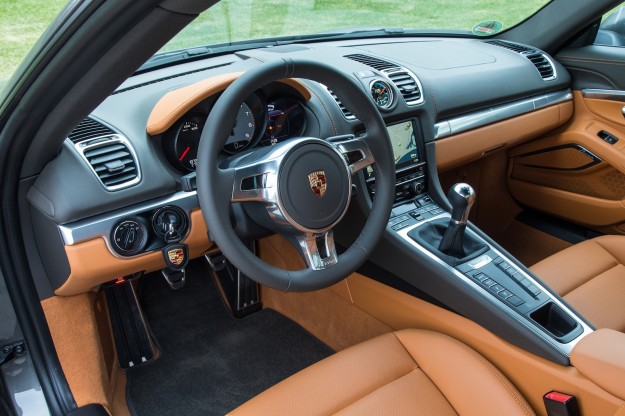
Most Cayman buyers, however, are more concerned about how the car loads up in corners.
The mid-engine, rear-drive concept comes quickly to the fore again, though the car’s longer wheelbase and wider tracks (the width between the axles) give the new Cayman an even greater sense of stability both on the road and the racetrack.
If the Macquarie dictionary were to have an entry for ‘Balanced sports car’, its definition would simply need to say: Porsche Cayman.
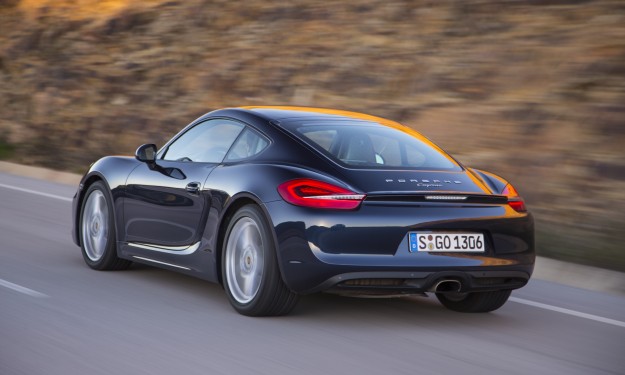
Its ability to steer quickly around challenging bends with a consistently neutral stance, its line never disturbed by even the nastiest of mid-corner bumps, suggests it would barely trouble a spirit level.
Carry speed into a corner and the Cayman, stiffer and lighter than its predecessor, finds impressive front-end grip, tucking its nose in earlier and asking for less patience from the driver than a 911 – allowing an earlier press of the throttle as you exit.
And just as you think you’ve pushed the Cayman to its limit of tyre adhesion and expect the Cayman to start running wide or the back end start to step out, the compact coupe simply squirms momentarily and regains its composure as the new torque vectoring system works its magic.
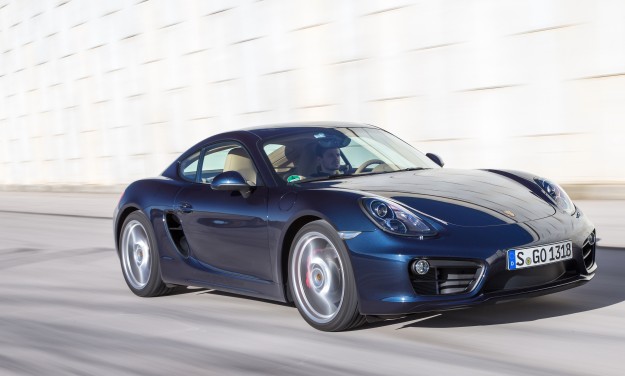
The system is optional but was fitted to our test cars, and brakes the inner rear wheel to allow the outer rear to help drive the Cayman through and out of corners.
The standard seats keep both driver and passenger secure, too, sandwiching torsos between well sized side bolsters.
It’s also worth forgetting all the fuss about the switch from hydraulic to electromechanical steering. The Cayman’s steering is still capable of communicating what’s going on beneath the front wheels while also offering ideal weighting, keen directness, and unerring accuracy.
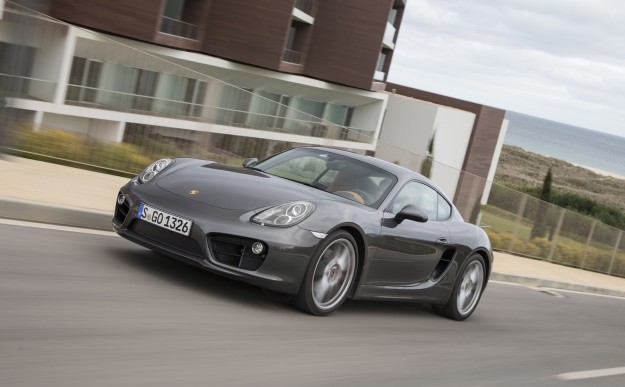
The stiffer body seems to have allowed Porsche’s engineers to engineer an extra degree of suppleness into the suspension. The base comes with 18-inch wheels, the S on 19s, though even on optional 20-inch wheels and narrow rubber the Cayman has a compliance that defies its taut body control and sharp handling.
Our experience on Portuguese roads, though, indicates road noise will be prominent on typical roads back home. And best to keep the suspension set to normal on the road and leave the stiffer set-up for the track only if you add the optional active dampers (Porsche Active Suspension Management).
As the sportier – and more expensive – half of the duo, the Cayman gains extra power from the same engines.
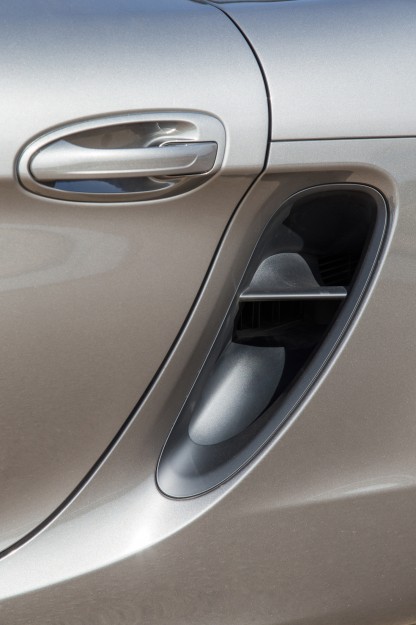
In the base model, a 2.7-litre flat six-cylinder loses 200cc to the previous engine but gains direct injection and produces 202kW and 290Nm. In sports car world, that’s enough to break the benchmark 100hp-per-litre barrier.
In the S a 3.4-litre flat six is related to the old 3.4 and shared with the base 911, and produces 239kW and 370Nm.
Gearbox choices remain a standard six-speed manual or seven-speed dual-clutch auto, both transmitting power to the rear wheels.
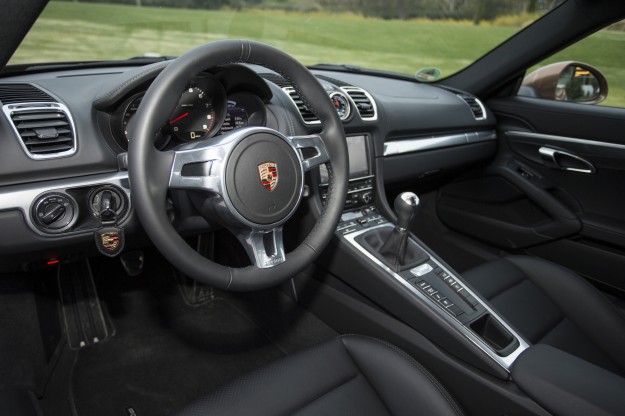
Our experience of the Boxster is enough to be confident the 2.7-litre wouldn’t disappoint, though we only got to test the S model on launch. The Cayman S is priced from $150,400 – and even bigger gap ($17,100 rather than $8500) to the equivalent Boxster.
The S’s 3.4, air-fed by those prominent side scoops, is a pearler of an engine. If 0-100km/h times are important to you, the S’s six-cylinder takes the Cayman to the three-figure mark seven-tenths of a second faster than the base model. The clock will tick to five seconds if you have a manual, 4.9 seconds if you have the PDK, and 4.7 if you have the optional Sport Chrono package and its launch control system.
Better to focus less on the stopwatch, though, and more on savouring how the Porsche Cayman S goes about its accelerative business.
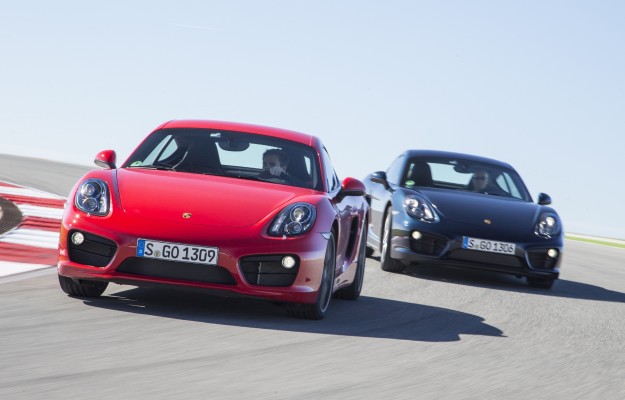
Its peak power is developed at 7400rpm, with a redline just 200rpm higher, and it’s a pure joy to rev the always-smooth flat six right up there, with the progressive speed accompanied by sonorous notes down low in the rev range before turning into a grin-inducing yowl beyond 5000rpm.
The precisely weighted clutch pedal and manual gearstick make for a highly satisfying action for the purists who refuse to choose an auto. Those same customers, though, may shake their head at the automatic throttle blipping function that comes with the optional Sport Chrono package and revs the engine to match road speed on downshifts.
It’s difficult not to favour the dual-clutch PDK, though, which brings quicker pace as well as slower consumption of fuel – 8.0L/100km versus 8.8L/100km. (The base model’s comparative figures are 7.7L/100km and 8.2L/100km.
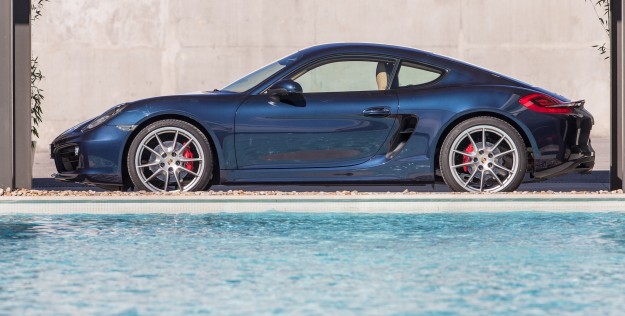
The PDK transmission requires an extra outlay of $5300, one of a number of extensive options that aren’t inexpensive.
If you were in the Porsche showroom for the circa-$150K Cayman S, it wouldn’t take many ticks of those ‘extras’ boxes to send the baby coupe into the pricing territory of the big-brother 911.
Porsche admits it’s here where many buyers decide to skip the Cayman and go for the icon.
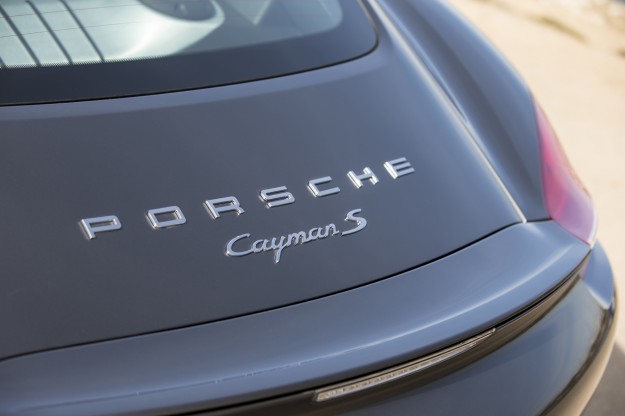
We wouldn’t suggest whether this is the wrong or right move.
But we will say that even in the context of the Australian market that reaps tens of thousands of dollars from car buyers through the spurious Luxury Car Tax, the Cayman is a relative bargain compared with its contemporaries.
A criticism of the original model remains valid that it should be cheaper than the Boxster, which would be inherently more expensive to build being a convertible. But that would feel somewhat churlish considering the Porsche Cayman is an intoxicating blend of ergonomic perfection, seductive performance and mesmerising handling.





